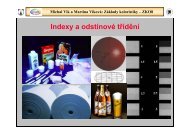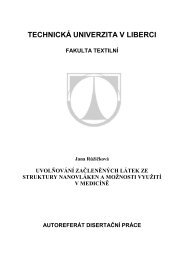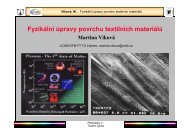You also want an ePaper? Increase the reach of your titles
YUMPU automatically turns print PDFs into web optimized ePapers that Google loves.
Macromolecular characterConformationAlthough light scattering33 and intrinsic viscosity experiments in the 1950s and 1960ssuggested that HA chains in solution have an expanded “somewhat stiff” random coilstructure. Cleland showed that the size of HA varies with pH and salt concentration aswould be expected for a flexible polyelectrolyte.In the 1970s, 2-, 3-, and 4-fold (both single and double) helical conformations of HA inthe solid state were discovered from X-ray diffraction.35-39 It was also shown that thehelical form of HA in the solid state depends on the counterion type, pH, temperature,and extent of hydration.By nuclear magnetic relaxation (NMR) measurements on HA solutions, Darke et al.identified two types of residues in HA chains. The relationship between the relaxationtimes and conformational mobility showed that there are two types of domain withdifferent mobility. While one had the mobility of a flexible polymer, the other was so stiffthat it had to contain cooperative structure. The stiff part represented 55-70% of the HAstructure, and this proportion was not altered by changes in ionic strength ortemperature, by addition of a denaturant such as urea, or by moderate changes in pH.Therefore, they suggested that the stiff chain segments differed from the flexible chainsegments by minor covalent features. According to Darke et al. the stiff segments werecomposed of at least 60 disaccharide units.25



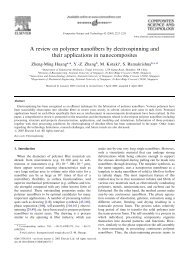

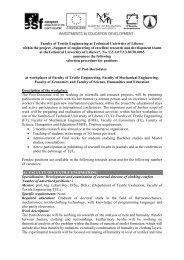



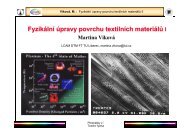
![5 Osvětlení [3 MB]](https://img.yumpu.com/50358472/1/190x134/5-osvetleni-3-mb.jpg?quality=85)

